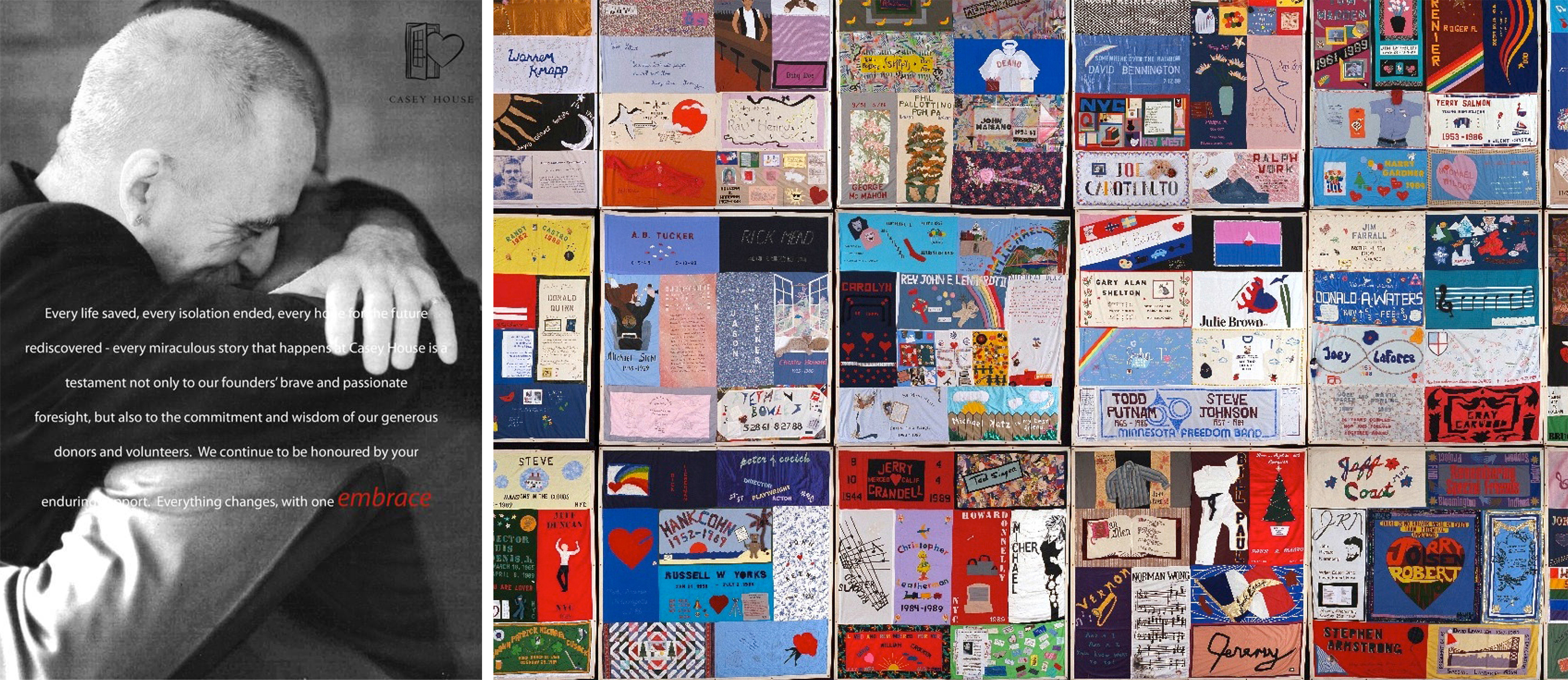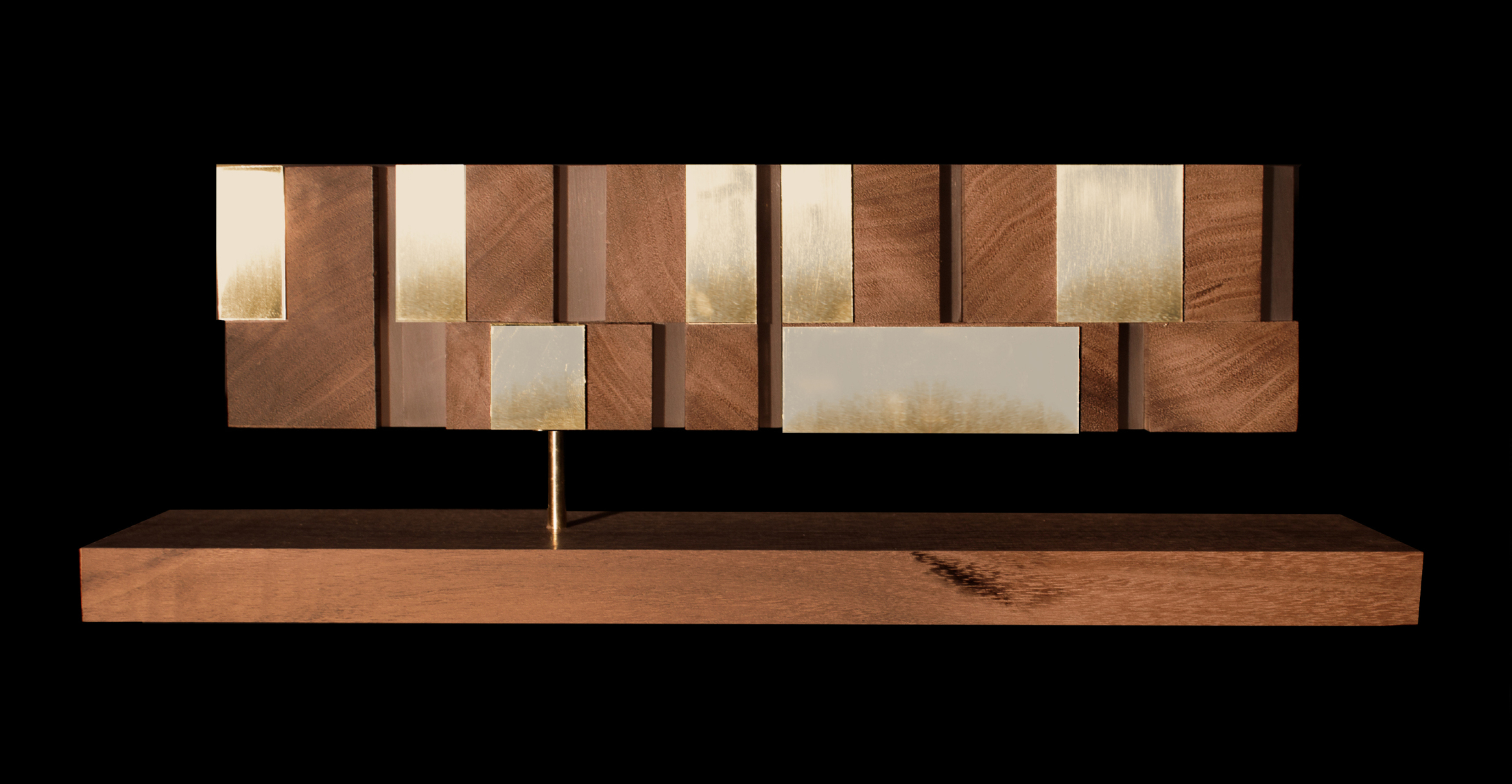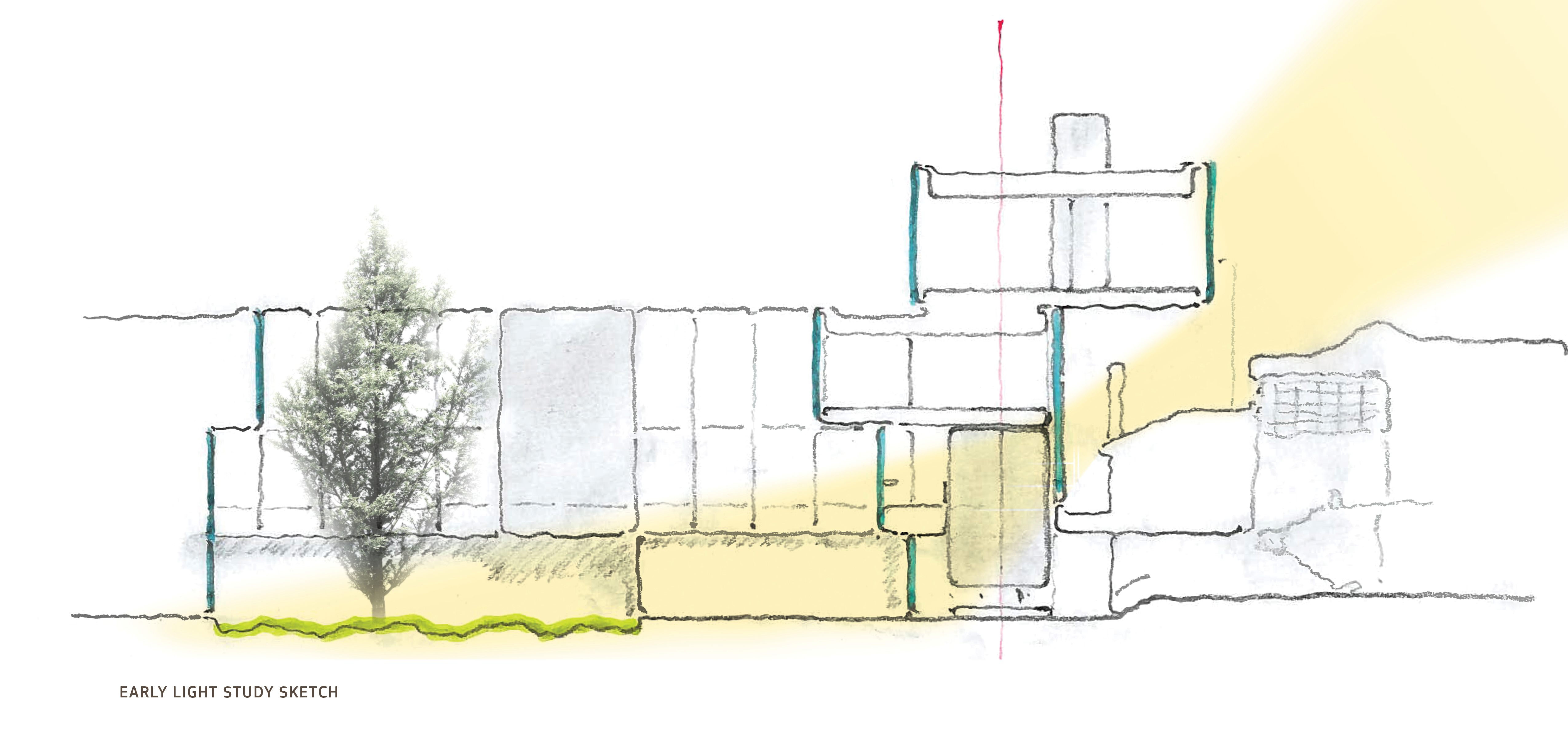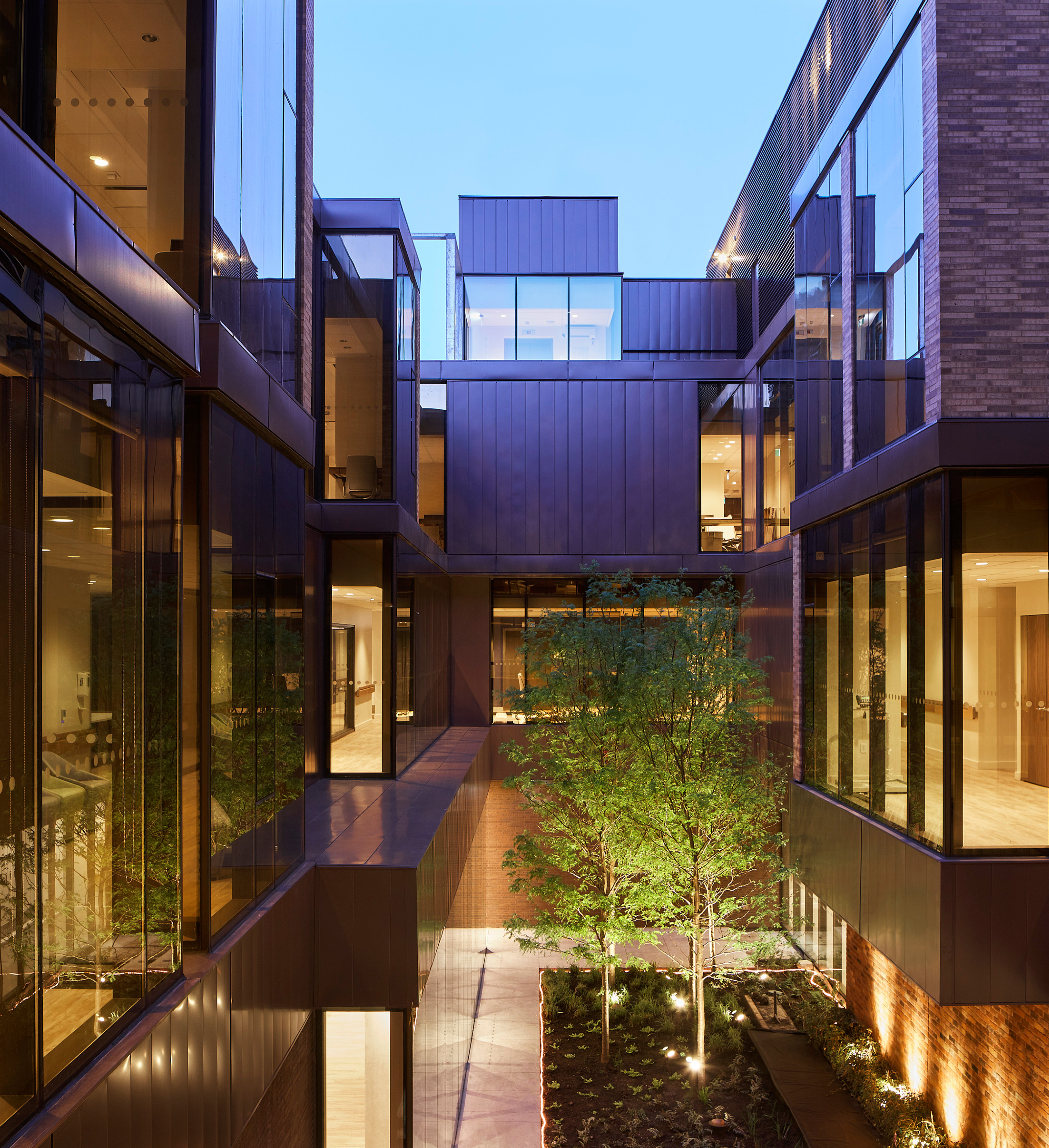Location: Toronto, Ontario
Completed: 2017
Architect: Hariri Pontarini Architects
Nominated by: Kristyn Wong-Tam, MPP (Toronto Centre)
Casey House’s new facility radically redefines what it means to provide compassionate healthcare, with a building that is highly functional, but is also full of love and profoundly humane.
An Evolving Facility to Meet Evolving Needs
Casey House first opened its doors in 1988 during the height of the HIV/AIDS epidemic. At that time, the average life expectancy for those living with AIDS was nine months and many died alone, cut off from traditional support structures like family and friends. As Canada’s first standalone treatment facility for people living with HIV/AIDS, and Ontario’s first freestanding hospice, Casey House was meant to provide the love, warmth, and compassion frequently missing in HIV/AIDS care. Their first client was greeted with a hug, and the volunteers and staff worked hard to create a sense of home within the facility.
Originally housed at 9 Huntley Street, Casey House specialized in palliative care, a type of care aimed at improving quality of life and mitigating pain for those terminally ill. However, as our understanding of HIV/AIDS advanced and treatments emerged, Casey House had a growing need for a new facility that could better accommodate its changing mission.
The new facility, opened right across the street from its original location, reflects Casey House’s changing services and clients, without ever losing sight of the mandate of care, love, and dignity of its founding.

Left: An advertisement for Casey House. Right: AIDS memorial quilt. Images courtesy of Hariri Pontarini Architects.
Casey House is now a hospital rather than a hospice, and while it continues to provide palliative care and other inpatient services through 14 private rooms, the new 59,000 square-foot facility has been designed to better support a much larger range of outpatient services, including several forms of therapies, nursing clinic, supervised consumption, and social services. These spaces were designed through dozens of hours of discussions and mock-ups with those who would be using them, including clients, healthcare professionals, and administrative staff.
Even the exterior is reflective of changing attitudes toward HIV/AIDS treatment. While the original facility was a welcoming home, it did little to express the organization's mission. The new facility boldly asserts its presence through an elegant patchwork of brick, bronze-tinted glass, and limestone—a reference to the AIDS quilt and the quilts produced at Casey House in memory of those who have died in their care. While a highly visible symbol, the opacity, heavy tint, and thoughtful placement of glazing carefully protects the privacy, discretion, and protection to those accessing care.

Model of Casey House showing quilt-inspired façade. Image courtesy of Hariri Pontarini Architects.
Architecture Grounded in Care
The design of Casey House is deeply rooted in the concept of care. The architects were acutely aware of the emotional engagement needed in healthcare environments, which is often lost in the machine-like nature of modern hospitals. As Siamak Hariri of Hariri Pontarini Architects puts it, “You should not feel like you’re in a hospital.”
 Sectional sketch drawing. Image courtesy of Hariri Pontarini Architects.
Sectional sketch drawing. Image courtesy of Hariri Pontarini Architects.
The new addition is organized around a slim courtyard, reaching over and around the Victorian home that has been incorporated into the new facility. Visible from every corridor and in-patient room, the courtyard brings life-affirming elements of green, water, and light deep into the heart of Casey House. This beautifully landscaped space serves as a sanctuary within a sanctuary, offering patients a direct connection to nature—a crucial element in the healing process.
The courtyard also produces long sightlines and open spaces that enhance this feeling, allowing patients to see and connect with others, fostering a sense of community.

Internal courtyard with trees and natural light. Image by Doublespace Photography, courtesy of Hariri Pontarini Architects.
Inside, the warm materials used are more reminiscent of a home than a hospital. A two-storey limestone fireplace invites you to cozy up, while vinyl flooring mimicking wood creates a familiar and comfortable atmosphere that is still easy to clean and maintain. Much of this palette was informed by the original 1875 mansion, a heritage house designed by prominent local architectural firm Langley, Langley & Burk and lovingly restored with the assistance of ERA Architects. Brick from the demolished carriage house was also incorporated into the new addition.
Casey House sets a new standard in healthcare design, one that places the wellbeing of patients at the forefront and proves that beauty and uplifting the spirit are a crucial part of the healing process. This radically different approach to healthcare architecture has garnered both national and international attention, earning the project a prestigious Governor General’s Medal and the International Interior Design Association (IIDA) Healthcare Design Award.
As we look to the future of healthcare in Ontario, we can only hope that new facilities will match the level of care—architecturally and otherwise—that Casey House has demonstrated is possible.
This post is part of the OAA’s Queen’s Park Picks 2024 series, where Ontario’s Members of Provincial Parliament (MPPs) were encouraged to nominate a building in their riding for a chance to learn more about it. This year, MPPs were asked to consider various typologies related to housing when making their suggestion, tying into the 2024 OAA Conference theme, Housing: Pushing the Envelope. Check out the rest of the series to learn more about great buildings across the province.